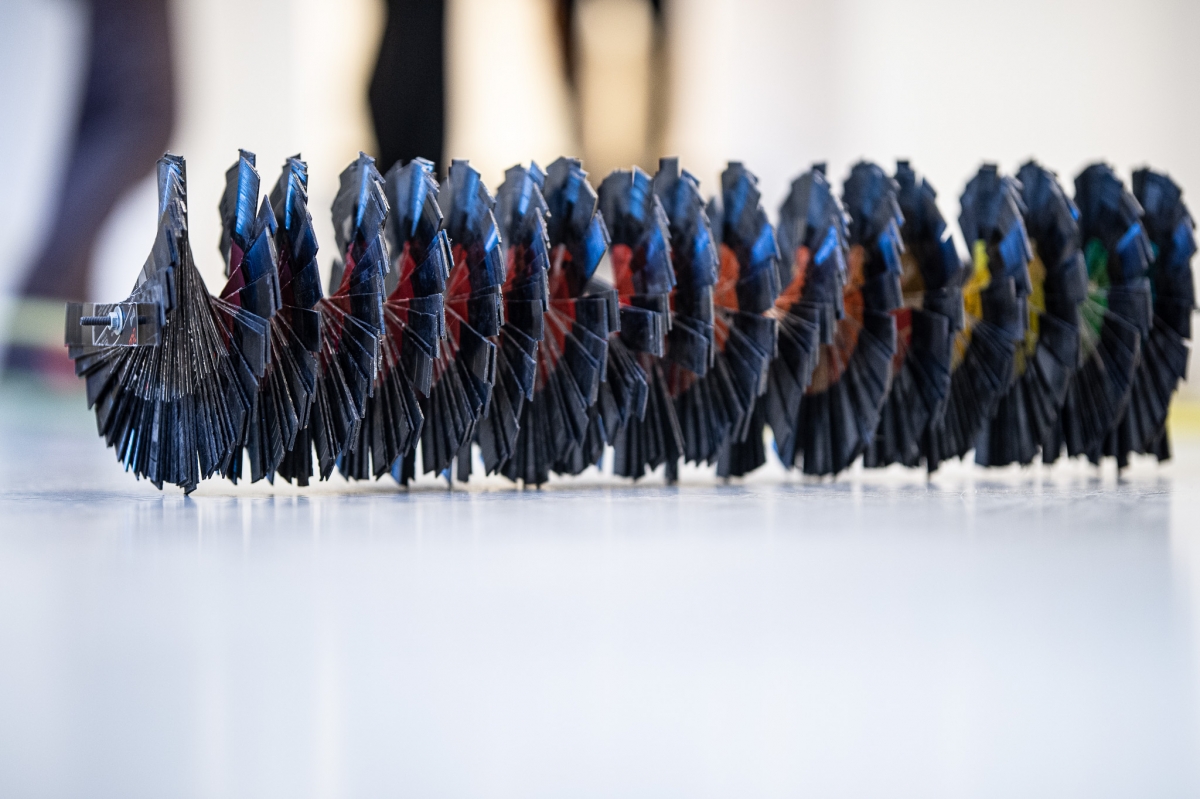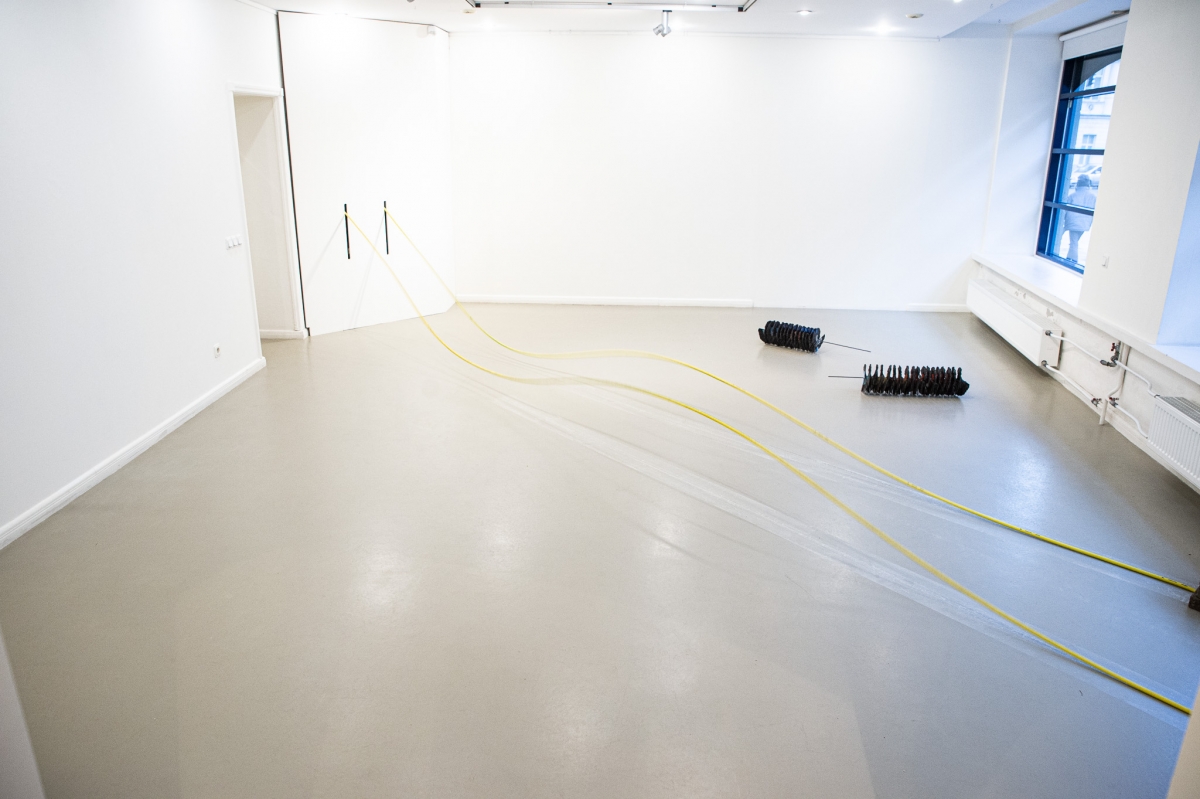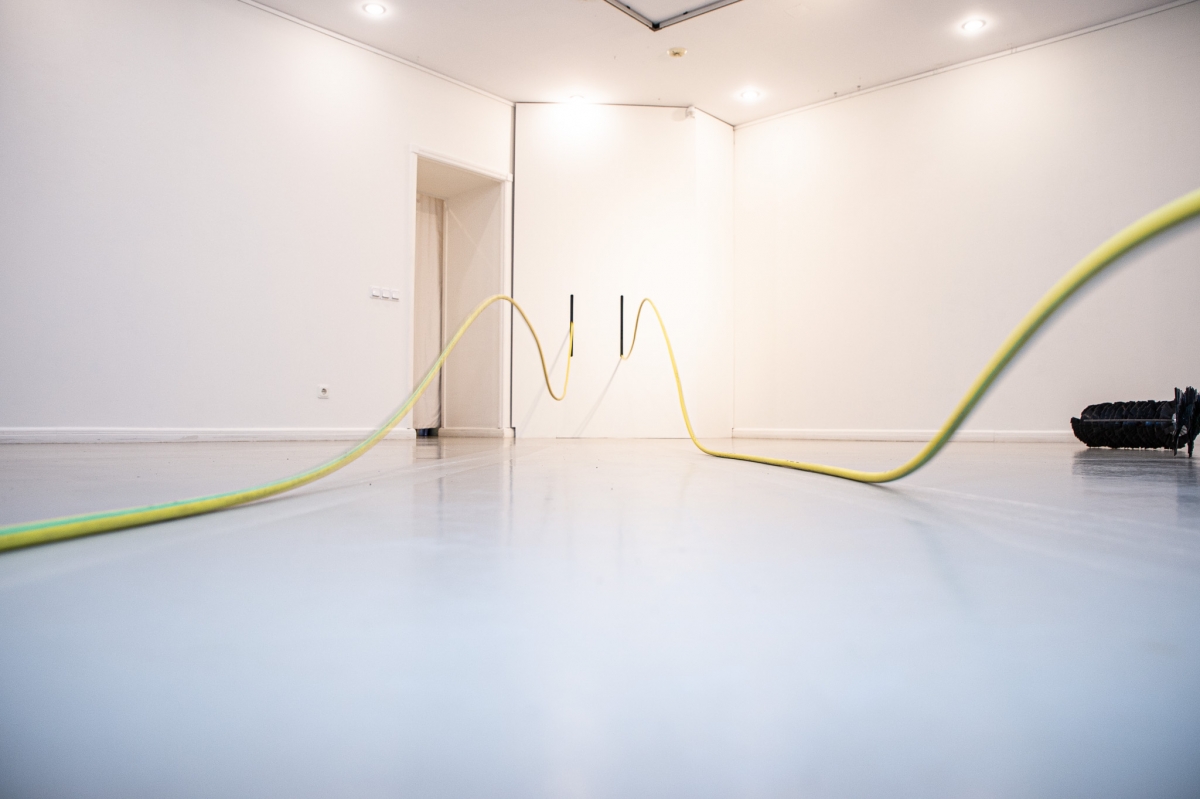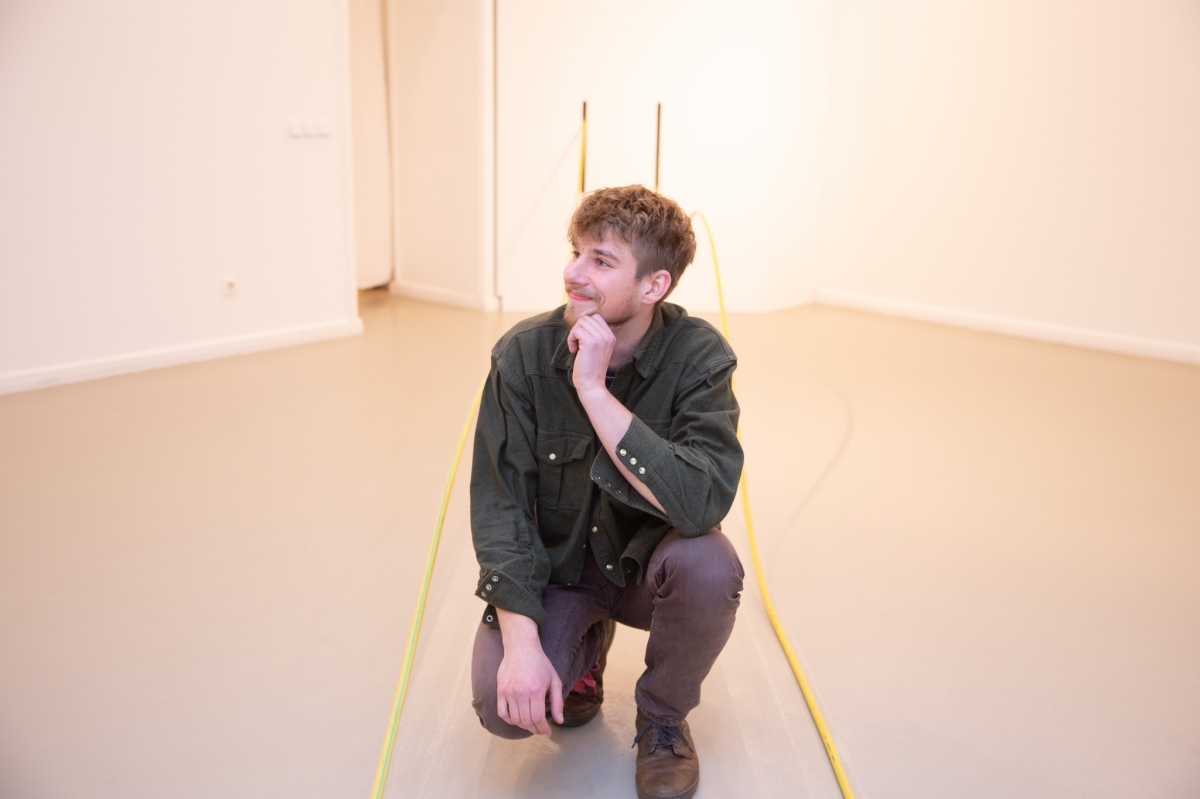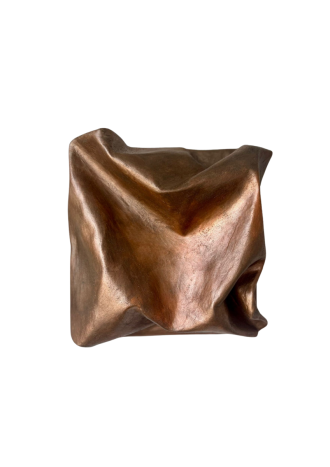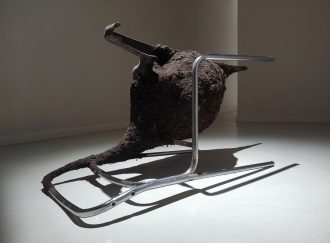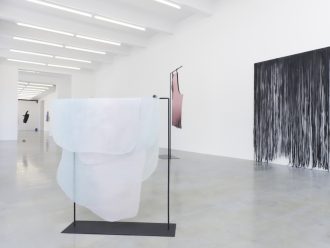On 10 October, the Vilnius-based Meno Niša gallery launched the second solo exhibition by the sculptor Matas Janušonis, entitled ‘Backyard’. The artist presented new sculptural works, which he uses to filter mass-consumption images, transforming them until they acquire a shape that can be placed in the artist’s backyard. After the launch of his new exhibition at Meno Niša, Matas Janušonis shared his thoughts about the creative process and his new works.
Rasa Barčaitė: What works are exhibited at Meno Niša?
Matas Janušonis: The exhibition ‘Backyard’ presents four sculptural works that I created this year. Some of the pieces are specially designed for the exhibition, while others were created earlier and found their way into the exhibition.
‘Backyard’ is mainly a state where feelings, memories and visions find their order and their place. The backyard is you can feel calm and arrange things however you want them, unrestricted and without being distracted. This is in contrast to the front yard, which is representative and visible to everyone, and where it usually matters how you look from the outside.
My works intertwine representational and kitsch decorative elements, images in general, and my formal commentaries about them. It is as if I am filtering mass images, and transforming them until they acquire a shape that fits in my backyard. You look at how it fits in with other things that are already in the yard, and feel some sort of interface or continuity.
The exhibition reveals two poles: it is like the front and the back, open and closed, insiders and outsiders. Architecturally, this duality also resonates in objects in space: two halls, one of which is divided into two equal triangles. They are similar in area, but one is as if inaccessible…
RB: You use mainly heavy materials for your sculptures, such as cast iron and concrete. Is it easy for you to work with these materials?
MJ: Compared to other sculptural materials that are easier to use, cast iron and concrete are rather hard to work with. But all technological processes can be implemented with a knowledge of the technique, and in consultation with more experienced people.
RB: How does your creative and technical process work?
MJ: My creative and technical processes can work independently of each other, but sometimes they are connected. The possibilities for creating are often dictated by technical aspects. They are like frames that I use as a basis to develop my work. Sometimes I just come up with something that is interesting to me, and force the technology to become capable of making the piece I want. I work for as long as it takes to reach this goal. But often I give in, and find a compromise between my idea and what is possible in terms of the materials.
RB: Last year, your audio installation Gates won the audience award of the JCDecaux Prize. Your vinyl record art installation was presented at the exhibition Gurrgutis. Why are you interested in sound?
MJ: At first, I became interested in visuals that symbolise sound. I was also looking for ways to represent sound itself in sculpture, using sound indirectly, with more symbolism and shapes for sound. I wanted to try these methods in order to talk about the very physical phenomenon of sound, which has no volume and cannot be touched or seen. I became hooked on the idea of simply imaging sound.
But sound doesn’t interest me as much as music, or music in sculpture. I don’t want to make music, because I’m a sculptor, not a musician. I’m interested in the very fundamental word sound, vibrations, waves. I’m interested in how sound can come into my own creative work.
Sometimes I create sound shapes, but they don’t produce any sound. Sometimes I create shapes that make sounds, but they say more about other things. Sometimes I even use sound that is created and recorded on a medium, such as in the installation Gates, presented for the JCDecaux Prize. In that work, by using records to depict the workings of the human heart, I raise the important question of why there is no heart left in contemporary art, and how important it is to bring it back.
RB: You started participating in the Takas sculpture exhibition at ArtVilnius while you were still a student. You have also tested yourself in the context of European art fairs. Your works have been presented by Meno Niša at international art fairs, such as viennacontemporary and YIA (in Brussels and Paris). This is a really big achievement for a young artist. How did you get into fairs?
MJ: I started participating in art fairs because although I had created a lot of pieces, they didn’t seem to be enough for a solo exhibition. For me, all works seem to be good, but one is stronger than another. I found ArtVilnius was a good place for me, because only one work has to be presented at Takas, the fair’s annual sculpture exhibition. I thought that was exactly the number of works I could create: one good piece a year. I was lucky that the exhibition curators accepted them.
Later, I started working with the Meno Niša gallery, which has presented me at foreign art fairs for several years. I’m glad about internationalisation, which really helps an artist’s career. My work was noticed at viennacontemporary, and purchased by the MOCAK Museum in Poland. And this year’s works showcased at ArtVilnius complemented the collection of the Lewben Art Foundation.
***
Matas Janušonis is currently studying for an MA in sculpture at Vilnius Academy of Art. His works have been presented at ArtVilnius, Positions Berlin, viennacontemporary, and the YIA art fairs in Brussels and Paris. They are also held in the collections of the Lewben Art Foundation and the MOCAK Museum of Contemporary Art in Krakow. Janušonis’ audio installation Gate is the winner of the audience award at the exhibition of the Contemporary Art Centre for the JCDecaux Prize 2018.
Matas Janušonis’ exhibition ‘Backyard’ is part of the gallery’s Art Space for Young Artists project. This is an ongoing art project, launched in 2011, covering young artists’ exhibition cycles, and promoting their initiatives and continuity of artistic ideas. ‘Backyard’ is on until 31 October. Meno Niša opening hours are: Tuesday to Friday, 12 noon to 6pm; Saturday, 12 noon to 4pm. Entry is free.
Photography: Rytis Šeškaitis

